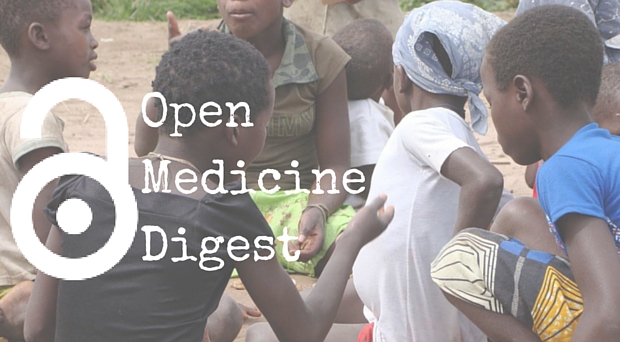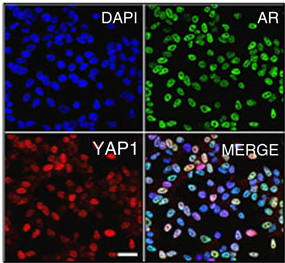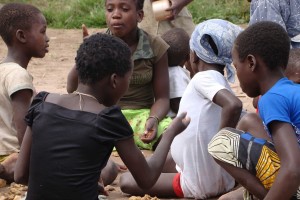
IL-6 in COPD: friend or foe?
Chronic obstructive pulmonary disease (COPD) is increasingly being recognized as a systemic inflammatory disease; evidence suggests that a number of different immune cells and mediators are involved in COPD pathophysiology.
Now, a systematic review and meta-analysis has been conducted to assess the relationship between Interleukin-6 (IL-6) – a multifunctional cytokine that has both pro- and anti-inflammatory roles – and COPD. The authors identified 33 studies investigating this association, finding that serum IL-6 levels are higher in patients with COPD than healthy controls. However, no correlation between IL-6 and COPD severity was identified.
The authors conclude that IL-6 may partly explain systemic complications occurring in patients with COPD, but caution that more studies are needed to establish whether interventions to decrease IL-6 levels could decrease the risk of COPD complications.
New insights into the mechanisms of castration-resistant prostate cancer
Dysregulated androgen receptor (AR) signaling is an important contributor to prostate cancer progression, and androgen deprivation therapy is beneficial for treating the disease. However, resistance to this type of therapy eventually develops, leading to castration-resistant prostate cancer (CRPC).

Understanding the mechanisms of how AR drives the development of CRPC is essential to inform the development of strategies to overcome therapy resistance. Researchers from the US hypothesized that AR may be interacting with the oncogene Yes-associated protein 1 (YAP1) to help drive disease progression. A comprehensive analysis of the interaction between these proteins was conducted, using cellular and molecular analyses of samples from patients with prostate cancer and cell models.
The authors found that YAP1 and AR co-localize with each other in CRPC cells. Importantly, suppression of YAP1 signaling led to a reduction in AR-dependent prostate cancer cell growth, suggesting that the YAP1-AR signaling complex could have a role in CRPC development, and should be explored further as a therapeutic target.
Kuser-Abali et al., Nature Communications
Identifying vulnerable people with CVD
Cardiovascular disease (CVD) affects around 40 million people aged over 65 in the US, and is the leading cause of death. Now, a tool has been developed to identify vulnerable people among those hospitalized for CVD.
Over 440 hospitalized older people were interviewed as part of the study to establish vulnerability (measured using the Vulnerable Elders Survey, VES-13), sociodemographic factors, healthcare utilization, and clinical measures. 54% of the patients were found to be vulnerable, and a higher VES-13 score was associated with a greater number of hospital visits and diagnosis of heart failure.
These findings underscore the importance of assessing vulnerability in older people admitted to hospital for CVD, and suggest that the VES-13 tool could be used to identify those requiring additional care.
Is HIV therapy cost-effective in the workplace?
New research suggests that provision of antiretroviral therapy (ART) in the workplace can be cost-saving in settings where HIV infection is prevalent.
Company-sponsored HIV counselling and voluntary testing with ensuing treatment of all HIV-positive employees and family members should be implemented universally at workplaces in countries with high HIV prevalence
Meyer-Rath et al.
PLOS Medicine
The researchers developed a mathematical model to estimate the costs of an ART treatment program provided by a South African coal mining company since 2002. The results of the model suggest that the program has led to an increase in ART coverage from 10% to 97% among eligible employees, as well as improvements in survival and a reduction in absences from work. The authors estimated that the annual cost of HIV to the coal mining company would decrease by 5%, and the average cost per employee infected with HIV would decrease by 14%, by 2022.
These findings suggest that in addition to improving longevity and quality of life for HIV-positive individuals, ART programs are beneficial for companies. The authors conclude that:
“Company-sponsored HIV counselling and voluntary testing with ensuing treatment of all HIV-positive employees and family members should be implemented universally at workplaces in countries with high HIV prevalence.”
Meyer-Rath et al., PLOS Medicine
Estimating global mortality rates for older children
Since the Millennium Development Goals, global health priorities have focused on reducing mortality rates among children under 5. However, the health of older children and adolescents is also an important consideration, especially in low- and middle-income countries (LMICs).

Now, researchers have analyzed birth history data over a 25-year period for 84 LMICs to calculate mortality risks for children aged 5-14 years. Estimates suggest that the total number of deaths among children in this age group fell from 2.4 million in 1990 to 1.5 million in 2010. These numbers are higher than previous estimates, suggesting that mortality rates among older children and adolescents could be higher than expected.
Based on these findings, the authors suggest that global policies aiming to reduce childhood mortality should be expanded to include older children and adolescents.
Comments